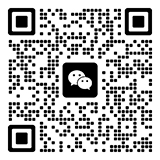

Picture book instructors are professional reading advocates who use picture books as the core carrier to guide readers, especially children to experience the joy of reading and understand the essence of stories through professional explanation, interpretation, and interaction. Their core value lies in building a bridge between picture books and readers, stimulating interest and conveying the diverse values within picture books.
Core work content:
- Picture book interpretation and interpretation: In-depth analysis of the text, illustrations, narrative logic of picture books, transforming static picture books into vivid "dynamic stories" through voice imitation, body movements, and emotional expression.
- Interactive guidance: Design interactive such as questioning, games, and role-playing to guide children to observe picture details, express their thoughts, avoid one-way indoctrination, and enhance the sense of participation reading.
- Reading scene creation: In places like libraries, classrooms, and communities, create an immersive picture book reading atmosphere by setting up reading environments and matching props (such as puppets and teaching aids related to picture books).
- Reading guidance: Provide suggestions for parents or teachers on picture book selection (such as matching picture books according to the age interests of children) and teach practical skills for parent-child reading and group reading.
- Theme activity planning: Design a series of picture book courses or reading activities around a specific (such as family, nature, and habit formation), combined with extended forms such as handicrafts and painting, to deepen the reading experience.
Main service objects
- Core group: Children aged 3-12, covering young children, and students in the lower and middle grades of elementary school.
- Extended group: Parents need guidance on parent-child reading, kindergarten and elementary school teachers who wish to carry out picture book teaching, and community reading promotion workers.
Professional core competency:
1. Picture book professional literacy: Familiar with the characteristics of different types of picture books (such as story picture books, science picture books, and emotional management picture), and able to accurately grasp the educational value and artistic value of picture books.
2. Expression and interpretation ability: Have clear language expression, rich emotional appeal, and physical, and be able to quickly capture the attention of the audience, making the story more attractive.
3. Children's psychological perception: Understand the cognitive level and interests of children different ages, design interactive methods that meet their understanding ability, and avoid content that is too deep or too superficial.
4. Activity organization ability: Be able to flexibly adjust pace of explanation and the form of interaction according to the venue, the number of people, and the characteristics of the audience, to ensure that the activity is orderly and interesting
Common occupational scenarios:
- Work in picture book libraries, children's bookstores, and the reading promotion departments of libraries to regularly carry out picture book story.
- Cooperate with kindergartens and elementary schools to provide students with picture book courses or extracurricular activity guidance.
- As a freelance instructor, participate community public welfare reading activities, and picture book lectures on commercial parent-child platforms.
- Carry out online picture book live broadcast, recorded courses, or provide parent groups with-child reading training.

The American Certification Institute Center (ACIC) is dedicated to providing professional and amateur training, examination, certification, and consulting services
ACIC News Notice Agency Authentication Examination Team Cooperate Certificate
ACIC International Qualification Certification Center Copyright
ICP filing number:Liao ICP No. xxxxxxxx -1








